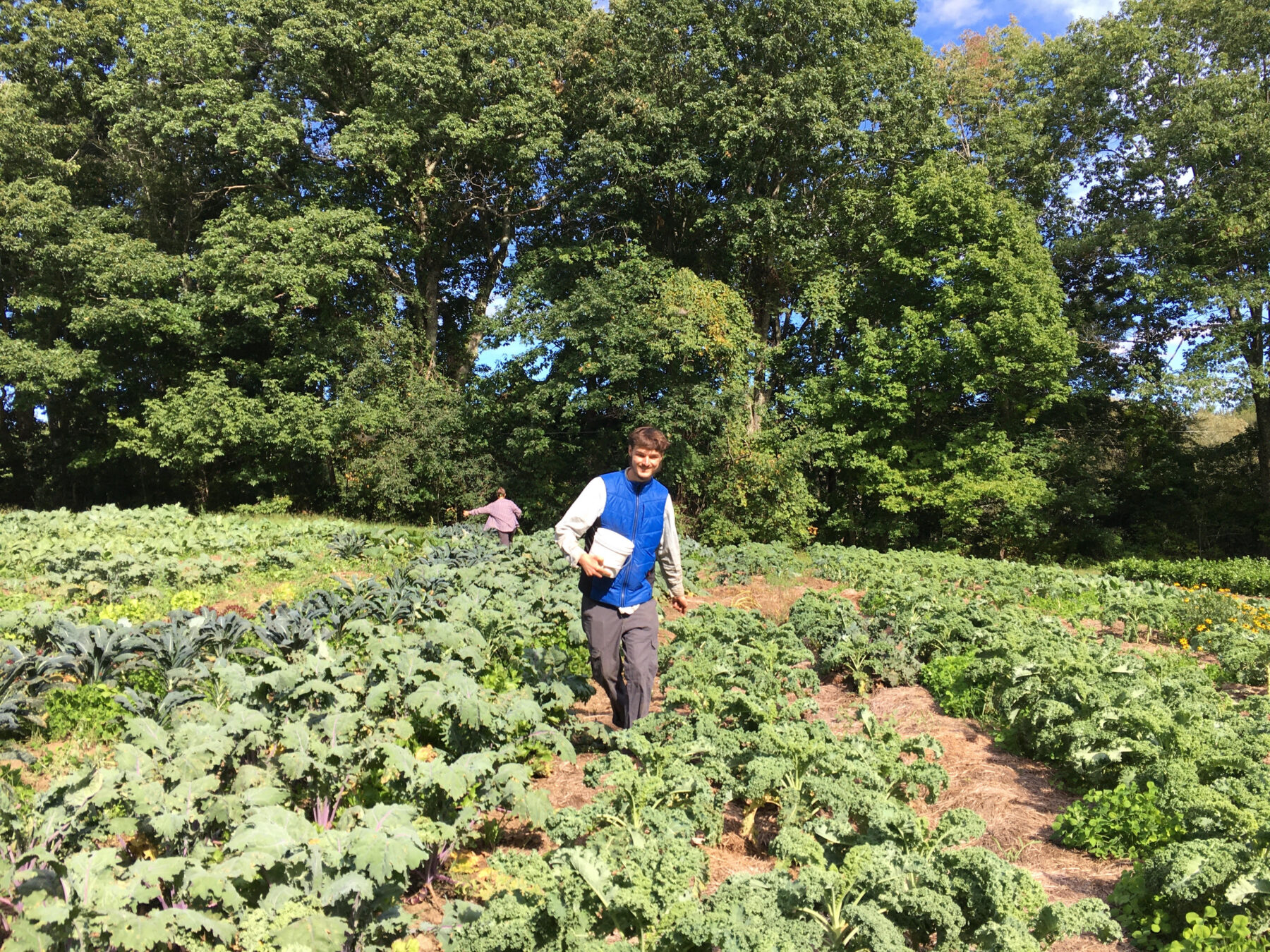News from the Farm, Monday September 14th
This Saturday afternoon found Julie and WWOOFers Davida and Gavin out in the fields sowing fall cover crops – oats and barley, phacelia, millet, buckwheat and sunflower. The inspiration for this mixed bag of cover crops is forward-thinking agronomists like Australian soil ecologist Dr. Christine Jones. Dr. Jones advocates for farming practices that “maximize diversity in both cover crops and cash crops” and recommends that farmers “aim for a good mix of broadleaf plants and grass-type plants and include as many different functional groups as possible. Diversity above ground will correlate with diversity below ground” and lead to more carbon sequestration and better soil health (1). The only missing ingredients from this cover crop cocktail are winter rye and hairy vetch, which Julie is hoping to acquire on Monday. She notes that rye, being perennial, requires a bit of forethought in a low-till system and will be making targeted plantings of it that will be tarped in spring to kill off the returning growth. “Rye enhances fertility enormously” she notes, “it has such a massive root system. And we want to get vetch to add a perennial nitrogen source”.
Looking around at the vegetable fields, Julie noted that “there are all sorts of beautiful things out here!”. A young planting of beans have climbed the trellises and look happy and healthy. The peppers are splendid, the nicest Julie has ever had. The newest planning of summer squash is looking lush of foliage and delectable of fruit. Julie is really hoping that we can keep enjoying the squash for awhile – often, later plantings come up well but “implode on themselves” before producing much. The sweet potatoes continue to amaze – at least, the parts that can be seen above ground. The cilantro looks well, the radishes too. This coming week the crew will plant lots of greens in the hoophouses with the fall share in mind: spinach, asian mixes, mesclun.
On the topic of the crops, Julie adds:
“Clare and I are ecstatic about the bounty that is in the fields right now but are also filled with a premonition that we might have an early killing frost and end up losing a lot of this good food. Fingers crossed that we will have a strong finish to the summer CSA (six more weeks after this one) and then the fall share (4 weeks after that). We are amassing onions, garlic, and winter squash as storage crops for later distribution and are poised to use a lot of polyester row cover as necessary to protect the tender green things. Meanwhile, Eric continues his diligence daily to foliar spray all of our plants in rotation throughout the week. These mineral and biological sprays not only promote more and healthier growth, but help the plants toughen up for the inevitable frost. Monday will be our last outdoor planting of radishes and hakurei turnips.
Last week we started the Monday share with potatoes, but realized early on that most of the potatoes are not yet harvestable so shunted back to chard and parsley for Wednesday and Friday. We often have to make snap decisions and changes in the field when plans meet reality.
When I think back to what our crop plan was in February when we were planning for 2020 and then the Covid wrench changed everything in March and April, we lost a 35 year old market and substantially changed our plans. We have been learning all season long how we should have planned our crops for this large 150 person CSA that suddenly fell into our laps over May and June.
With the addition of 6000 square feet of new land in one of our fields we were able to plant a lot of crops that will be starting to get ready in the next couple to 4 weeks – carrots, beets, turnips, rutabaga. The upshot is that we are hoping to be able to add a lot of new crops over the next 6 weeks to keep your palate receiving a broad culinary diversity. Stay tuned as we continue to hustle”.
In staff news, Davida and Gavin are diving in to farm work and learning with great energy and interest. Both are 18, have deferred college for the year, and really care about learning to farm. Lindsy continues on with her loving attention to the animals and food preservation.



